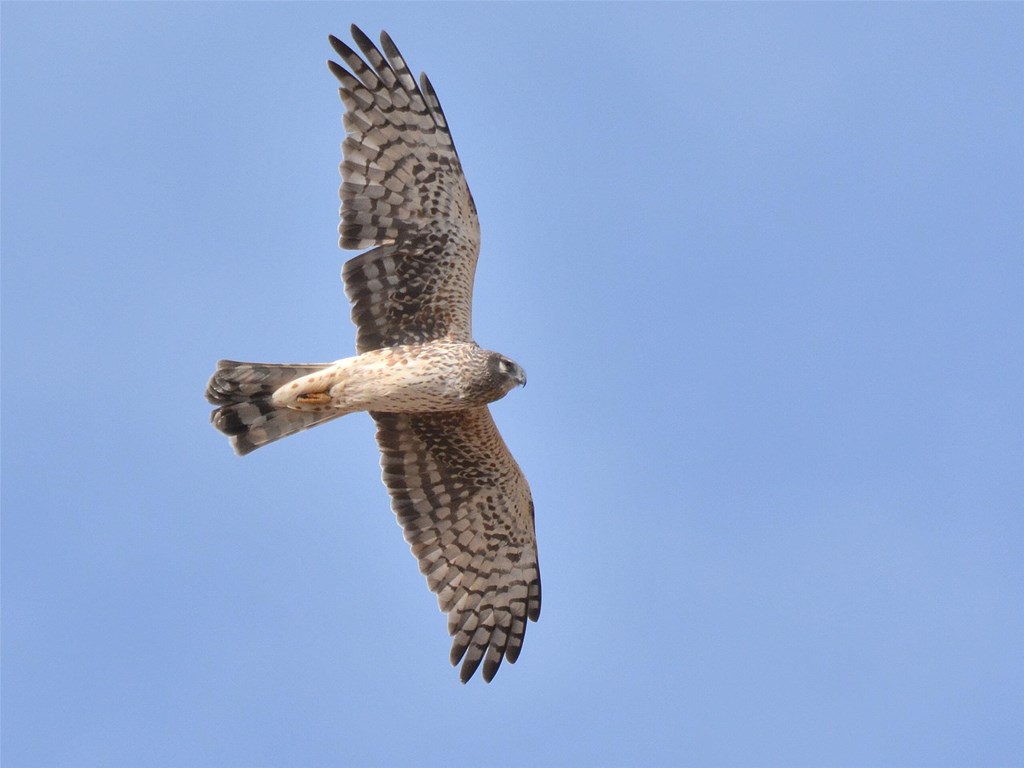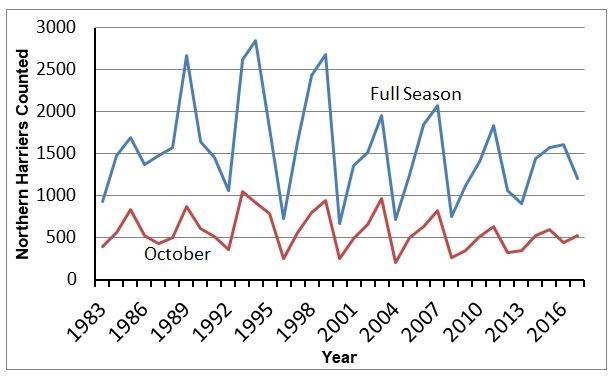New Paper Published: Widespread Harrier Population Cycle Discovered
Posted on March 03, 2020 in Science

Scientists from four hawk-watch sites, including our very own Director of Conservation Science Dr. Laurie Goodrich, have recently published an article titled "Northern Harriers Have a Geographically Broad Four-Year Migration Cycle" in The Journal of Raptor Research. The paper reports on coordinated findings that the number of fall-migrant Northern Harriers (formerly called Marsh Hawk) has shown a 4-year cycle across interior northeastern North America for at least 35 years.
This conclusion means that estimating long-term trends in harrier numbers from migration counts could be improved by taking the cycle into account. Trends could be analyzed by comparing peak-year counts to peak-year counts across the years, instead of inadvertently starting with a peak and ending with a trough (or vice-versa). The research also suggests that the harriers’ important summer prey, meadow voles, may cycle in concert in many places across a wide area, which has not been documented and is worth investigating. Cyclic change in vole numbers was previously linked to a 4-year cycle in harrier breeding only at a local level. According to lead author David Schimpf, “How widespread synchrony in cycles comes about is an unresolved mystery in the field of population ecology”.
The researchers used raptor tallies recorded for 35 consecutive years at some North American sites where migrants were counted daily. Another study author, Laurie Goodrich, commented “Long-term counts are rare and rely heavily on the support of many volunteers and biologists. We are grateful for their work, as only with long-term data can we address some important questions”.
In this study consecutive peaks had a strong statistical tendency to be 4 years apart, with a few small variations. The cycle was clearest when fall counts from sites in the interior (Minnesota, Ontario, and Pennsylvania) were added together, even though the individual sites also showed the cycle. This means that harrier numbers cycled together over a large area, as the interior counting sites span 1200 km (750 miles) of longitude.

When counts are broken out by month, the cycle was especially clear for October, with September also having a strong cycle. The number of harriers migrating along the Atlantic coast in New Jersey did not display a 4-year cycle. Counts of harriers migrating north in the spring around the eastern tip of Lake Ontario did not correlate with the southbound counts of the following autumn, suggesting that summer breeding success of harriers may drive the cycle.
The researchers also found that year-to-year changes in the autumn North Atlantic Oscillation, a broad atmospheric circulation pattern, did not explain the migration cycle. They further showed that the harrier 4-year migration cycle is not a pattern that other species of hawks, falcons, or eagles matched.
"Northern Harriers Have a Geographically Broad Four-Year Migration Cycle" is
available at http://www.bioone.org/toc/rapt/current.
About the journal: The Journal of Raptor Research is a peer-reviewed international journal dedicated to the dissemination of scientific information about birds of prey, and is the official publication of the Raptor Research Foundation.
Paper Authors: David J. Schimpf, Laurie J. Goodrich, Alison R. Kocek, David A. La Puma